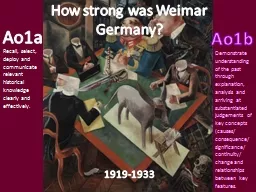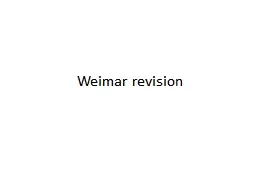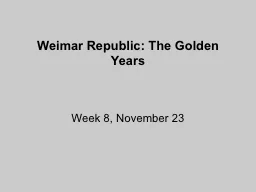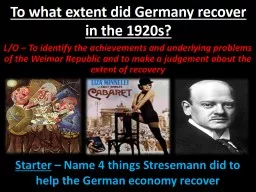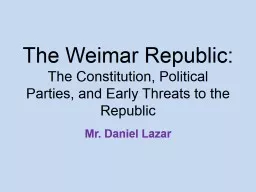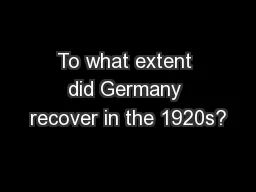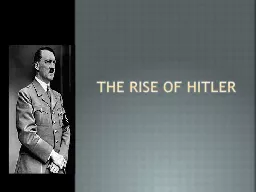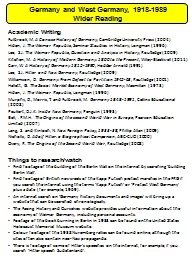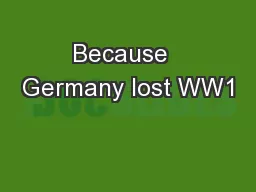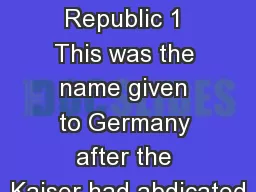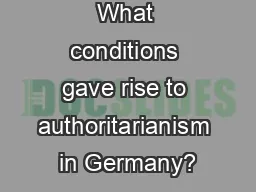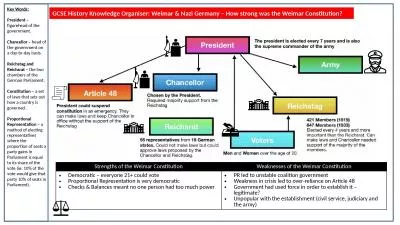PPT-How strong was Weimar Germany?
Author : mitsue-stanley | Published Date : 2017-03-20
19191933 Ao1a Ao1b Recall select deploy and communicate relevant historical knowledge clearly and effectively Demonstrate understanding of the past through explanation
Presentation Embed Code
Download Presentation
Download Presentation The PPT/PDF document "How strong was Weimar Germany?" is the property of its rightful owner. Permission is granted to download and print the materials on this website for personal, non-commercial use only, and to display it on your personal computer provided you do not modify the materials and that you retain all copyright notices contained in the materials. By downloading content from our website, you accept the terms of this agreement.
How strong was Weimar Germany?: Transcript
Download Rules Of Document
"How strong was Weimar Germany?"The content belongs to its owner. You may download and print it for personal use, without modification, and keep all copyright notices. By downloading, you agree to these terms.
Related Documents

